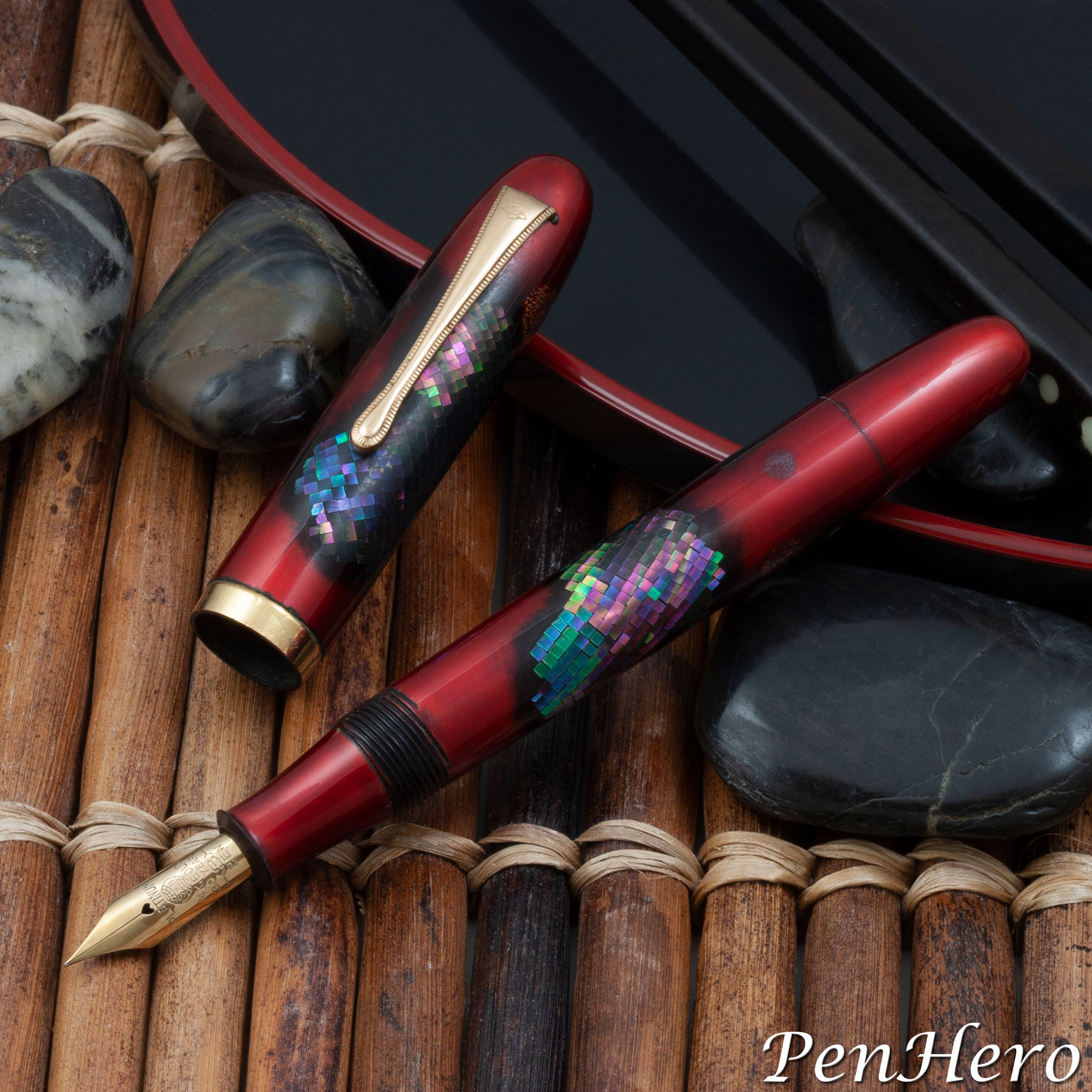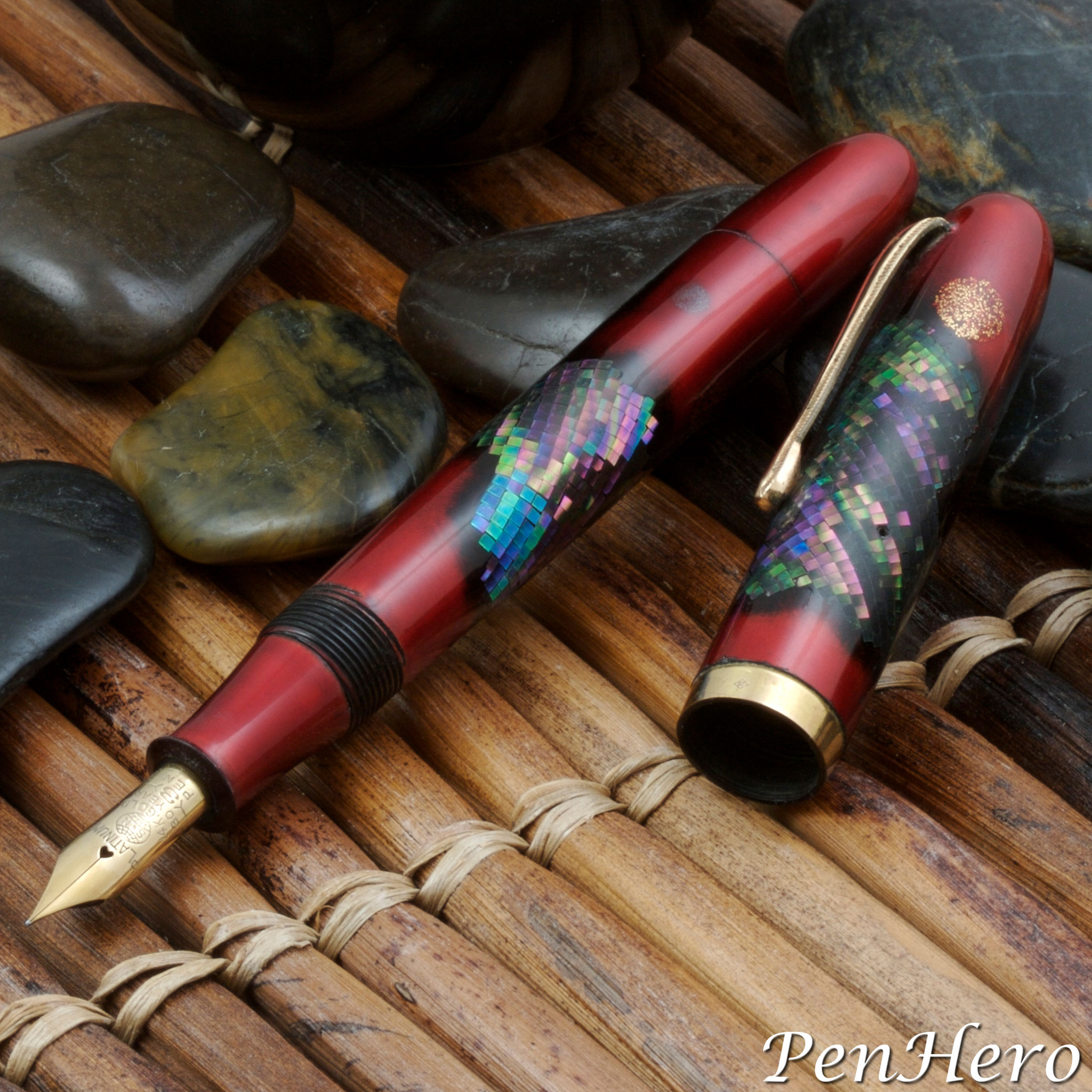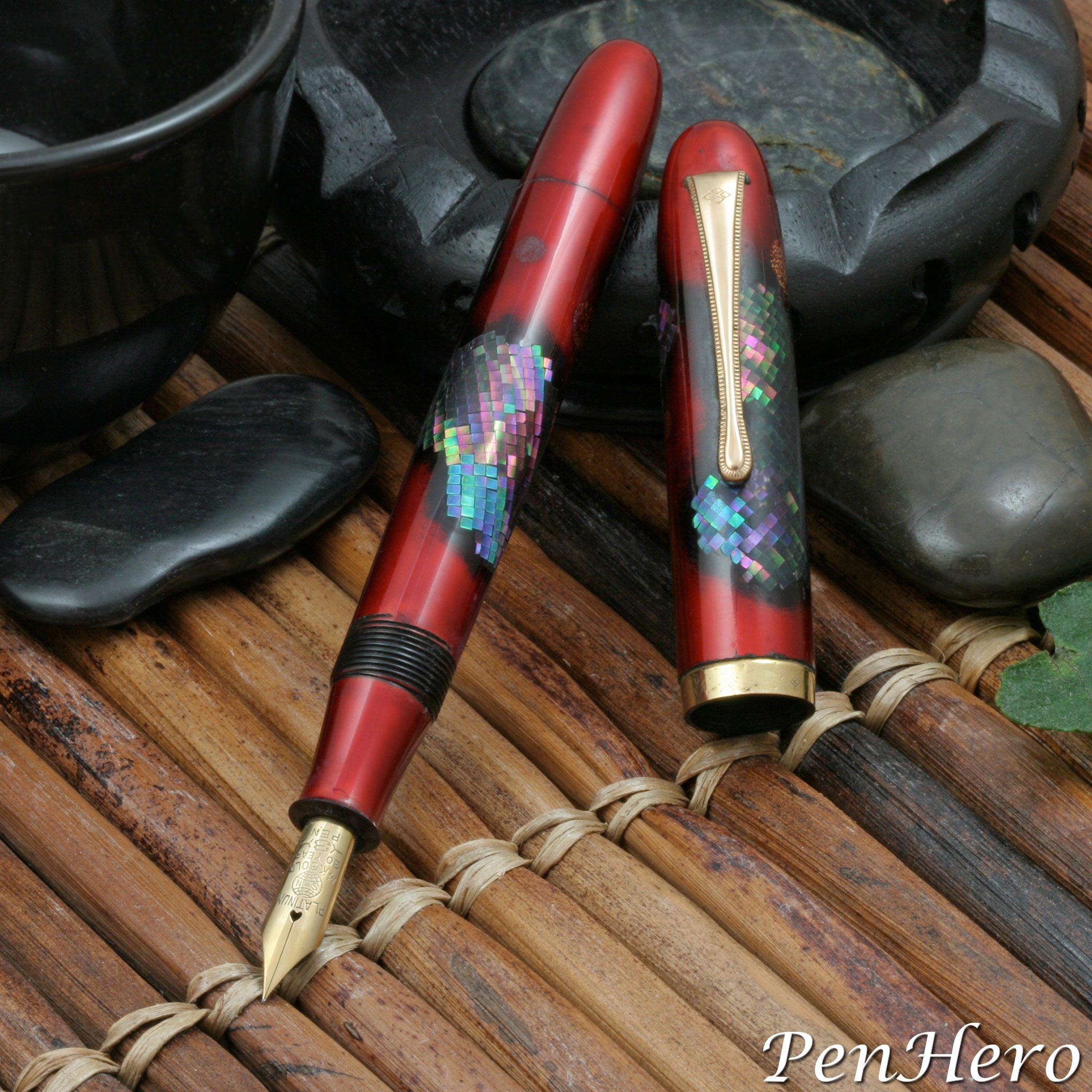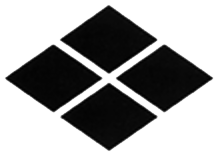Yotubishi Shibayama Style Raden Decorated Pen c. 1957
by Jim Mamoulides, May 3, 2024
 Yotubishi Shibayama style Raden decorated pen c. 1957
Yotubishi Shibayama style Raden decorated pen c. 1957
Shimmering Mother-of-Pearl
This is a c. 1957 Yotsubishi ink shut-off eyedropper fountain pen decorated using a Shibayama style Raden mother-of-pearl shell inlay technique on red urushi lacquer. The pen was featured in the winter 2006 Pennant article “Collecting Japanese Pens” by Stan Klemanowicz. The pen was made by Ishi-Shoten Yotsubishi (literally yotu = four, bisi = diamond), a company from Osaka that made highly collectible decorated pens, but according to the article, sourced nibs and hardware from other pen companies. The four diamond logo can be seen on the top of the clip and on the cap band. The nib on this example is made by Platinum and is stamped PLATINUM over 14K. GOLD over 30 YEAR over 3 over PEN. The nib is likely a replacement.
Eyedropper pens with an ink shut-off valve at the end of the barrel fill like any other eyedropper type, by unscrewing the nib section from the barrel and dripping ink into the barrel using a bulb eyedropper. The knob at the end of the barrel is attached to a long rod that extends inside the barrel up to the base of the feed in the nib section. When the knob is screwed flush with the end of the barrel, the rod cuts off ink flow to the feed, making it an ink shut off valve, making the pen safe to pocket or put down. To write, the knob must be unscrewed slightly, pulling the stopper back from the base of the feed, which allows ink to flow to the nib.
A very similar pen is shown on a page from the 1957 Ishi-Shoten Catalog, shown on page 112 of Fountain Pens of Japan. The caption says the catalog contains Shibayama style pearl inlay artworks in more than ten different designs and twenty other types of pearl inlay works. The pen shown is described as: “maki-e, chogai-chirashi (fine small chips of a precious pearl from the South Seas), Raden high class pearl inlay work.”
There is a very similar pen on page 117 of Fountain Pens of Japan with a different cap, barrel, and clop style, dated c. 1959 and described as an “Ishi-Shoten fountain pen, Tamamushi-shu-nuri, Raden, 14 karat rolled gold trim, 14 karat gold nib, eyedropper filler, c. 1959.” Ishi-Shoten Yotsubishi clearly used this technique on more than one pen type.
Shibayama Style and Raden Decoration
Shibayama, according to Fountain Pens of Japan, is the name given to “luxury inlay work with precious stones, ivory, and coral," a technique developed by Onoki Senzo and named after the Shibayama region, currently the Chiba Prefecture, near Tokyo. Shibayama decorated objects were shown at the Japanese arts and crafts exhibit at the Paris World Exposition in 1867, helping popularize it in the west in that period.
 Yotubishi Shibayama style Raden decorated pen c. 1957
Yotubishi Shibayama style Raden decorated pen c. 1957
Raden is a technique that uses natural mother-of-pearl material. According to Fountain Pens of Japan, ra means “conch shell” and den means “studded material.” “The artist cuts small flat pearl pieces to fit exactly into the figure and pastes them onto the surface.” Different mother-of-pearl materials are used to achieve different colors in the artwork.
The mother-of-pearl pieces inlaid into the cap and barrel of this pen create a shimmering effect of pink, purple, green, blue, yellow, and black. The edges around the inlays are darkened, feathering out into the red urushi lacquer covering the rest of the cap and barrel. There is also classic maki-e decoration on the pen, with a sprinkled gold dust “Sun” decoration on the side of the cap and a sprinkled gray dust “Moon” decoration near the end of the barrel.
Four Diamond Pens
Ishi-Shoten, also known as Ishi & Co., was established in Tokyo in 1925 by pen maker Yoshinosuke Ishii. Following the lead of Pilot, who began making maki-e pens in the 1920s, Ishi-Shoten, though a small company with initially as few as ten workers, began competing by making less expensive maki-e pens. Ishi-Shoten used the four diamond trademark, yotsubishi in Japanese, and the mark can be found on the clip top on most pens, and sometimes on the cap band. In reference materials, on the pens, and in catalogs, there are three spellings, Yotsubishi, Yotubisi, and Yotubishi, all pronounced the same. Fountain Pens of Japan makes the distinction that the company name became Ishi-Shoten Yotsubishi, but the brand name was Yotubishi. The company ceased operations in 1984.
 Yotubishi Shibayama style Raden decorated pen c. 1957
Yotubishi Shibayama style Raden decorated pen c. 1957
This is an eye-catching and very well made pen. The abstract Shibayama mother-of-pearl artwork is fascinating to look at, with the color change over the inlaid area as if they were huge pixels from a close-up of an impressionistic painting. The retro balance shape covered in red urushi works well as the base for the artwork.
I did not fill or write with the pen, as it was on loan for photos, but the nib feels very smooth from dry write testing.
This is an exceptional pen and surprising that it was an unsigned Ishi-Shoten catalog choice, as opposed to the artist signed limited editions of today. There were many different Yotsubishi art pens were made in the 1950s and they are very uncommon in the United States. This would be a prized pen in any collection.
References
“Collecting Japanese Pens” by Stan Klemanowicz, The Pennant, Winter 2006, published by the Pen Collectors of America
Fountain Pens of Japan by Andreas Lambrou and Masamichi Sunami, © 2012 Andreas Lambrou Publishers, Epping, Essex, United Kingdom, pages 101-118
Lacquer box with blossoms, Chiddingstone Castle, Edenbridge, Kent, UK
“Shibayama style cabinet”, Museum Pedro del Río Zañartu, copyright © 2020
Interact
Comments on this article may be sent to the author, Jim Mamoulides


